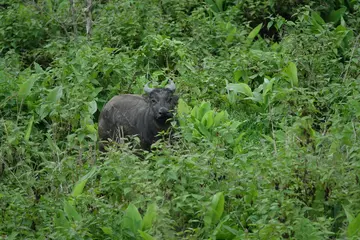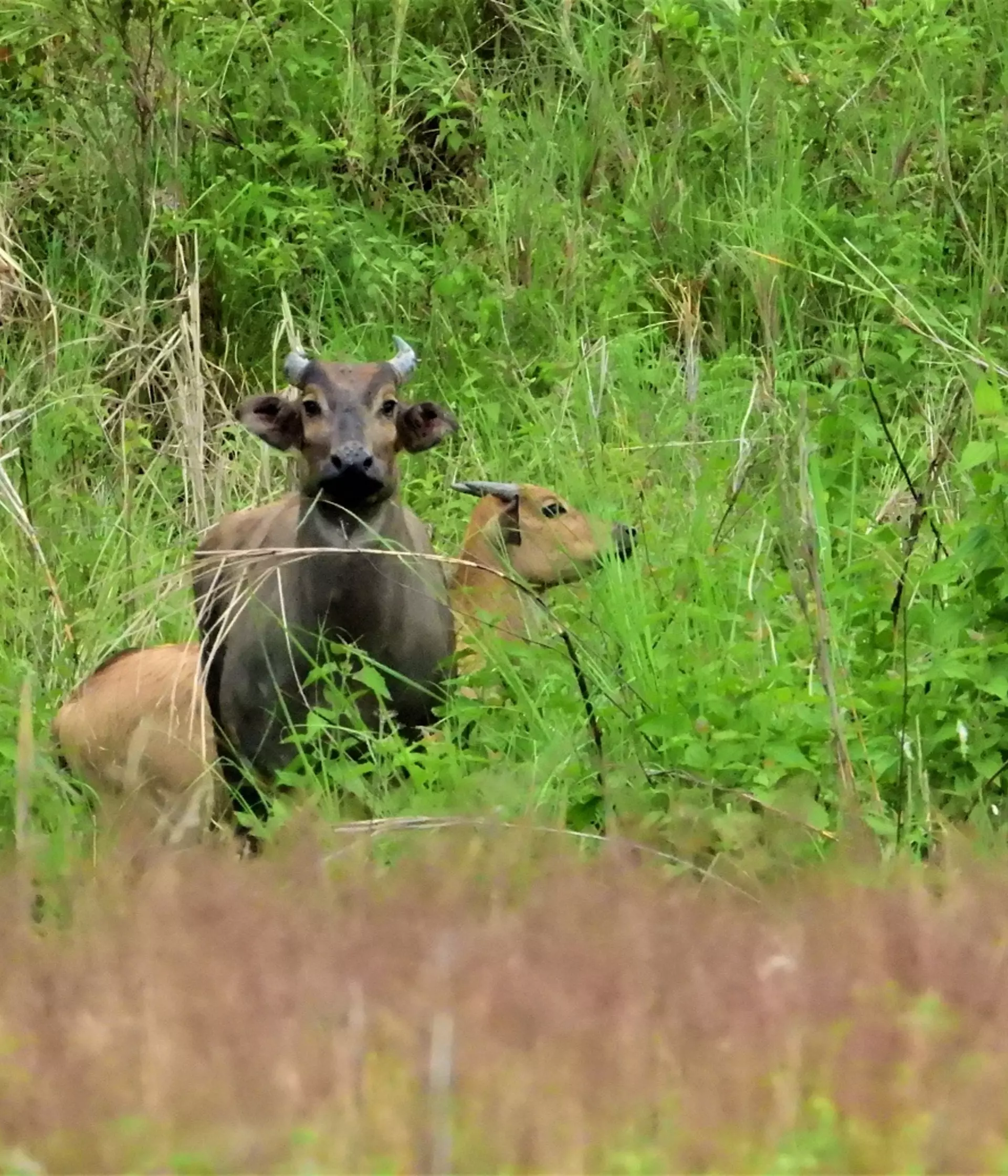
Finding the perfect site for Tamaraw Conservation
Last month, our experts joined partners: D'Aboville Foundation and Demo Farm Inc.(DAF), Department of Environment and Natural Resources Tamaraw Conservation Program (DENR TCP), Mounts Iglit-Baco Natural Park (MIBNP) Protected Area Management Office (PAMO), University of the Philippines Los Baños (UPLB), and Mandai Nature, to assess sites around the island of Mindoro as part of the work that ZSL are leading to lay out to the Philippine Government the possible options for the long term conservation of the species.
Working together to protect the tamaraw
Together we are working to conserve the Critically Endangered tamaraw (Bubalis mindorensis) on the island of Mindoro in the Philippines, most recently by conducting a Feasibility Study to lay out the options for the long-term preservation of the species.
Tamaraws are a small species of wild water buffalo that live only on the island of Mindoro; there are about 300 individuals remaining in a few small, isolated populations on the island.

The Interventions in Wild Animal Health approach
The team included Dr. Mikko-Angelo Reyes who works for the Tamaraw Conservation Program (TCP) and attended the Interventions in Wild Animal Health (IWAH) course in Sariska Tiger Reserve, Rajasthan India in February 2024, supported by ZSL. Dr. Amanda Guthrie, our Head of Wildlife Health Services, and an instructor on the Interventions in Wild Animal Health (IWAH) course also attended the field site visits.
The IWAH course focuses on ecosystem health, human-animal conflict, the human-domestic animal-wildlife interface and disease risk analysis that can be directly translated to saving the tamaraw.,. Skills and knowledge gained through the IWAH course directly helped us evaluate sites and measure the risks and advantages of each site as it relates to tamaraw conservation.
Dr. Mikko has worked extensively on the island of Mindoro and has in depth knowledge of the terrain, the health and location of tamaraw, and the native plants - tremendously valuable when assessing each site and its suitability for tamaraw.
Evaluating suitable sites in Mindorro
We looked at a variety of sites on Mindoro for suitability of tamaraw conservation; carefully considering the accessibility, infrastructure, safety, biosecurity, disease risk, potential for human-wildlife conflict and availability of suitable surrounding natural resources likefood and native plants. We also evaluated the presence of humans (including indigenous peoples) and anthropogenic influences (i.e. introduction of invasive plants, the presence of domestic animals, road construction, farming, etc.).
When asked about the expedition, Amanda told us,
"The island itself is beautiful; the weather was very warm and humid, it’s the beginning of the rainy season so there were some wet and muddy days, but the adventure was well worth it!
Our teams gathered extensive information about the field sites and interacted with many local people on this vital expedition. Climbing many mountains, crossed ravines using bamboo bridges and wading through rivers to identify suitable tamaraw habitat.
Overall, it was a very productive and fun trip; we gained a great deal of knowledge about how we might plan for the future of tamaraw conservation".
Next steps
When conservationists are faced with complex conservation decisions, we sometimes use a process called structured decision making. This helps decision-makers lay out all the evidence and opinions from multiple stakeholders and experts to make informed conservation decisions. We will be using the data gathered as part of the site visits to inform this process and feed into the decision-making process being used to help lay out the options to the Philippine government for the long term conservation of the species.
This work is generously supported by funding from Fondation Segré and DENR.
